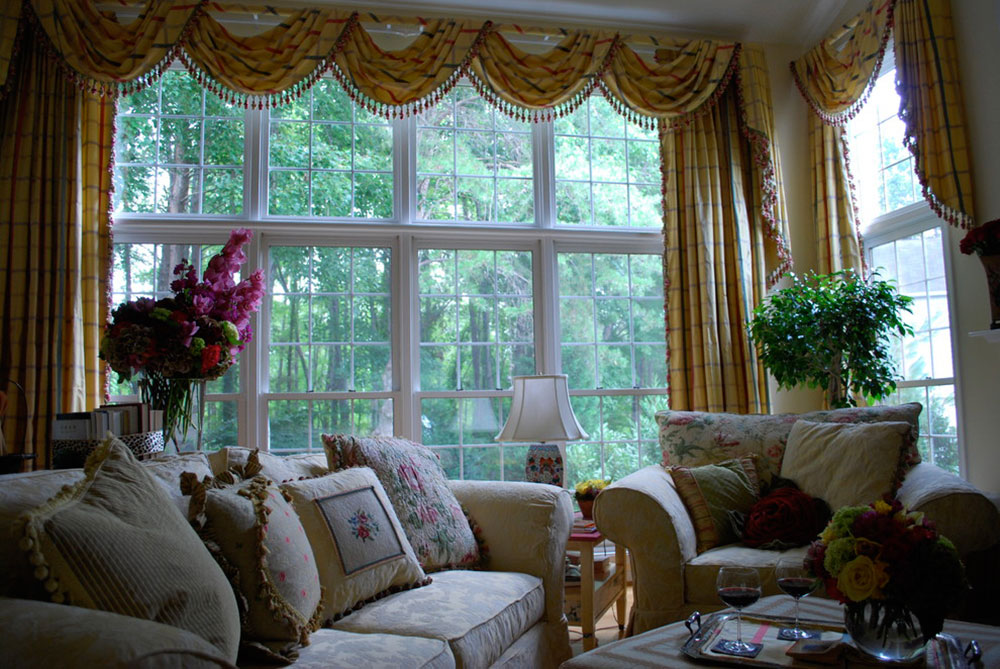Advertisement
They may seem the same before inexperienced eyes, but the truth is that in the world of interior decoration it is very important to differentiate each element. One of the most confusing names is the upper window decoration, which can be valances or cornices.
Although both serve the same purpose, the way they do it is different. Look at it in this way; in a chess game, it is important to know the difference between a bishop and a pawn, although all of them are ultimately pieces of the game.
The confusion between a valance and a window cornice is more common than you think. They have a marked difference, but time has made the concepts confused.
Both seek to decorate the upper part of your window where usually there are tubes or systems for blinds and curtains. They can be used separately or together since one does not eliminate the possibility of the other.
So, what’s the difference between a cornice and a valance?
Let’s briefly look at the definition of valances and cornices before moving on to more tangible differences.
Valance definition: a length of decorative drapery hung above a window to screen the curtain fittings.
Basically, a valance is no more than a short curtain that rests on the top of the window, so that it hangs. In general, being fabrics of moderate extensions, we can get them in the curtain manufacturers.
Cornice definition: is an ornamental framework of wood or composition to which window curtains are attached by rods with rings or hooks
A window Cornice, in contrast, is a rigid piece that covers the entire top of the window, as if it were a drawer. This is made mostly of wood for its decorative properties.
Clarified the definitions of window valances and cornices on a literal level, we proceed to leave you at the bottom some of the most popular options when using them.
Valances
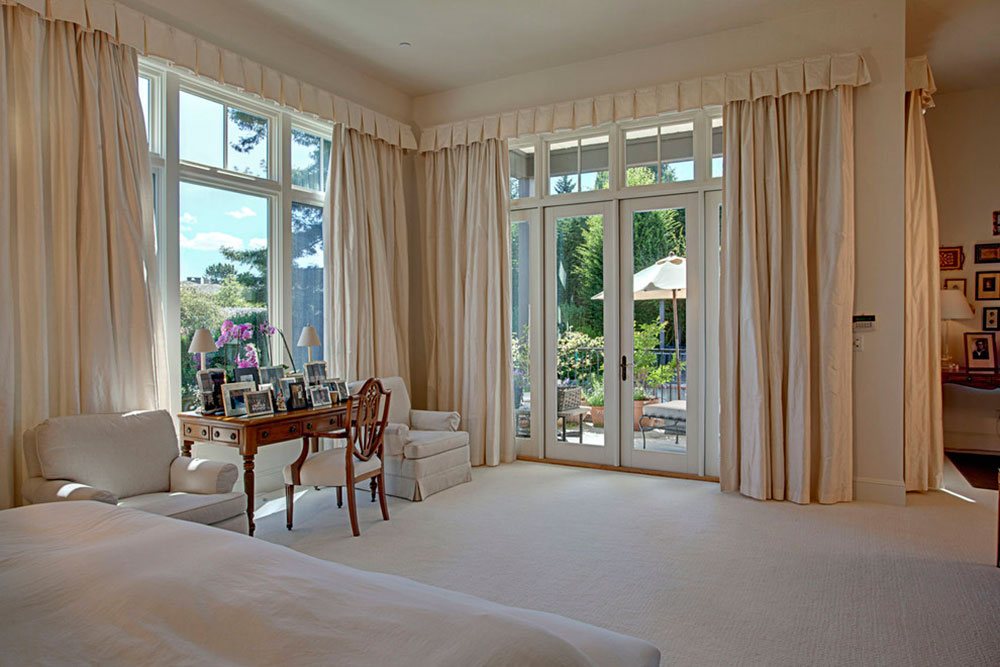
Image source: DME Construction
We started the list with the most flexible. The Valances are useful for almost any situation, since depending on how we place it, we can create formal or casual environments. Additionally, by not being rigid, we can move them when we need a clear view of the window.
At the time of use, there are certain points that we can customize to our liking, such as the way in which it holds the upper tube and if the ends will be hanging freely. According to your needs, we can then divide them into the following valances types:
When you’re looking for a fast decoration, use Simple Valances
It is usually a fabric valance that simply joins to the upper support using clip rings. It will be enough to place it to generate a casual and homelike atmosphere.
A more permanent and formal solution, the Pleated Valances
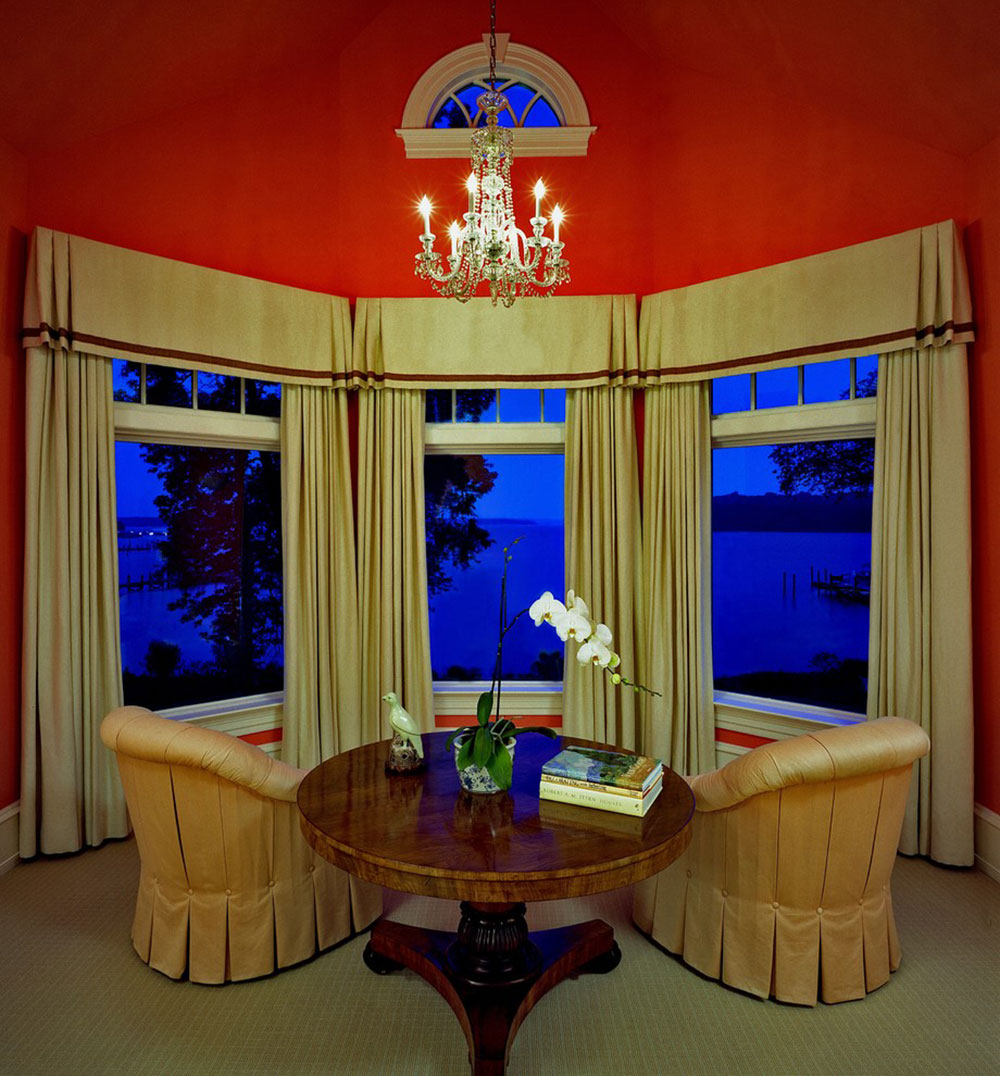 Image source: BROWN DAVIS ARCHITECTURE & INTERIORS
Image source: BROWN DAVIS ARCHITECTURE & INTERIORS
These are pieces sewed to upper rods with an L shape. Due to their hanging, they tend to be rectangular pieces of cloth, which suffer a fold that is then sewed all along so that there is an opening through which the support passes.
These valances offer a more formal and simple touch to the windows, besides that, among the benefits, they hide the superior support.
To put together our own pleated valance, we need to follow the next steps:
- Locate the piece of cloth that you will use for the valance on a wide flat surface where we can work.
- Depending on our choice, we will fold a section of the cloth all the way to sew it and make it like a tube, or we can install a series of rings at an approximate distance of 4 inches between each one.
- We will insert the upper support through our valance. If we decide to use the rings method, we will have to locate them properly and uniformly so as not to create large sheets of fabric that damage our design.
Create a luxurious atmosphere with a Scarf Valance
This option is the most formal and extravagant of all. A scarf valance creates the feeling of lightly wrapping the stand while moving freely over it. Usually, they end up in the form of a waterfall with the ends falling through the window.
To assemble this valance, it is recommended that someone else help us. The steps for its preparation are the following:
- We stretch the valance all along its horizontal on a flat surface.
- Next, we begin to fold the fabric with lines that go from the right to the left, until we have a kind of elongated accordion. We mark the midpoint with the use of a pin or tape, which will serve us later to center it on the support.
- To maintain the accordion shape, we will proceed to make a series of moorings all along with the valance. Using paper strips, we will hold the ends and some central part with enough force, and we will use tape on the rolls of paper so that they do not get loose.
- Now, with the help of another person, each will proceed to grab one end of the valance to rise it to the support. Whether you use stairs or chairs for this task, be careful not to hinder the work among you or you could fall.
- With the fabric on the top support of the window, we will let the valance rest by zigzag or spiral movements. We must pay attention to the location of the midpoint we previously marked, plus we have to leave enough cloth to create a tie on each side.
- Additionally, once the valance is held, we can let the ends fall.
- Now we remove the paper ties and simply pull the lower folds slightly to create that rippling effect. Be careful not to apply excessive force.
- Finally, and as an extra safety mechanism, use small nylon strips to create transparent tie-downs at the ends, so that our valance does not move.
Shows freedom with a lightweight fabric valance
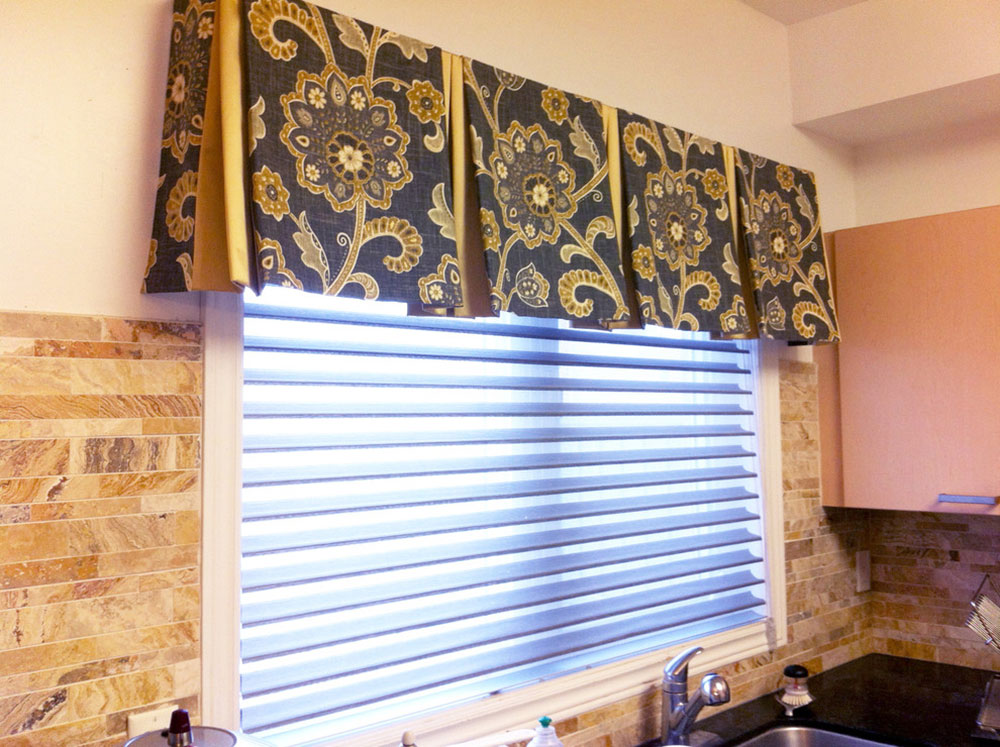 Image source: Trendy Blinds Inc
Image source: Trendy Blinds Inc
This last option does not require the use of large tubular supports along with our window. On the contrary, a pair of hooks on the windows corners (or a handful depending on the length) will be enough. The steps are very simple:
- Install a wall hook in each upper corner of the window.
- As if we were going to make a scarf valance, we proceed to fold the fabric in the accordion form.
- Now you just have to mount each of the ends of the fabric on the hooks, so that there is a large central fold that we can stretch to create a kind of bridge or ripple.
If we wish, instead we can keep the centerpiece straight to gain additional fabric at the ends.
Cornices
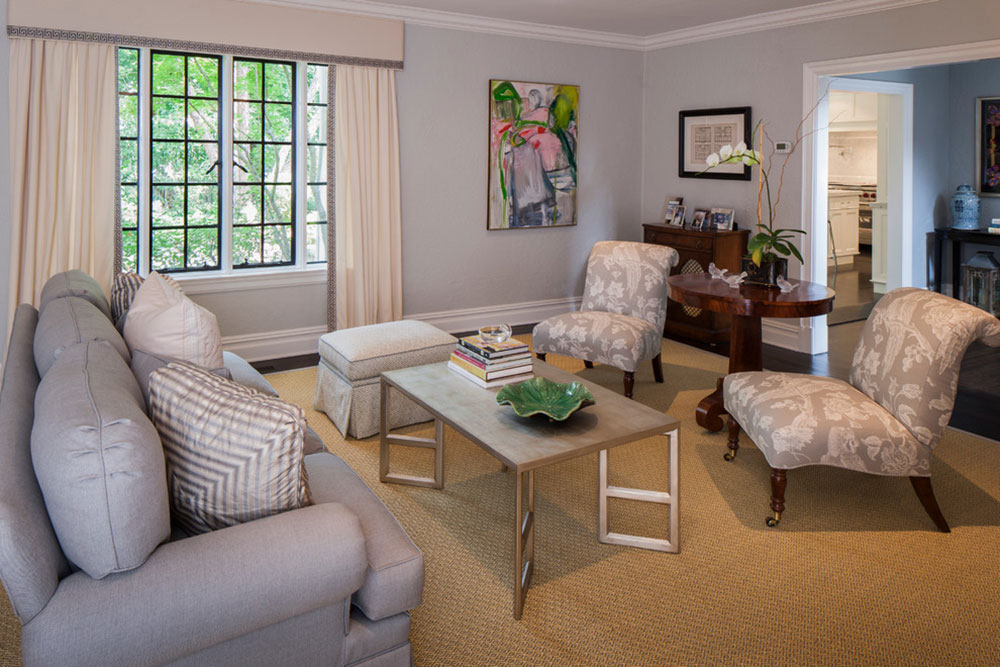 Image source: Patricia Knox Designs
Image source: Patricia Knox Designs
After the stage of the valances, and looking for a more rigid solution, the windows cornices arrive. When it is made of plastic, it is usually upholstered with the use of fabrics. However, the real charm of them is that we can mold them as we wish, so much so that some of them, like wood, do not use tapestries.
In wood, we can get them in many shapes and materials, from those made of bamboo or oak to those with stunning moldings that break the classic rectangular design.
And it is precisely, a cornice board does not have to follow the strict meaning of the word. It is good that it is a table, but it can have different shapes and styles, so much that most resemble colonial or neoclassical figures, similar to those seen in antique furniture.
Usually, the cornices boards are carved in the lower part, since the upper part fulfills more a functional purpose.
Another big difference between valances and cornices is that most likely we need an expert hand to make the latter since they are not just a piece of cloth, but a complete piece of craftsmanship.
If you do not find the cornice box you want, we suggest you hire a carpenter to do it, you just have to take the design you want. Also, keep in mind that the names change between manufacturer, so it is always good to have an image at hand.
Here are some of the most popular designs used in cornices around the world
Curved lines can create multiple shapes
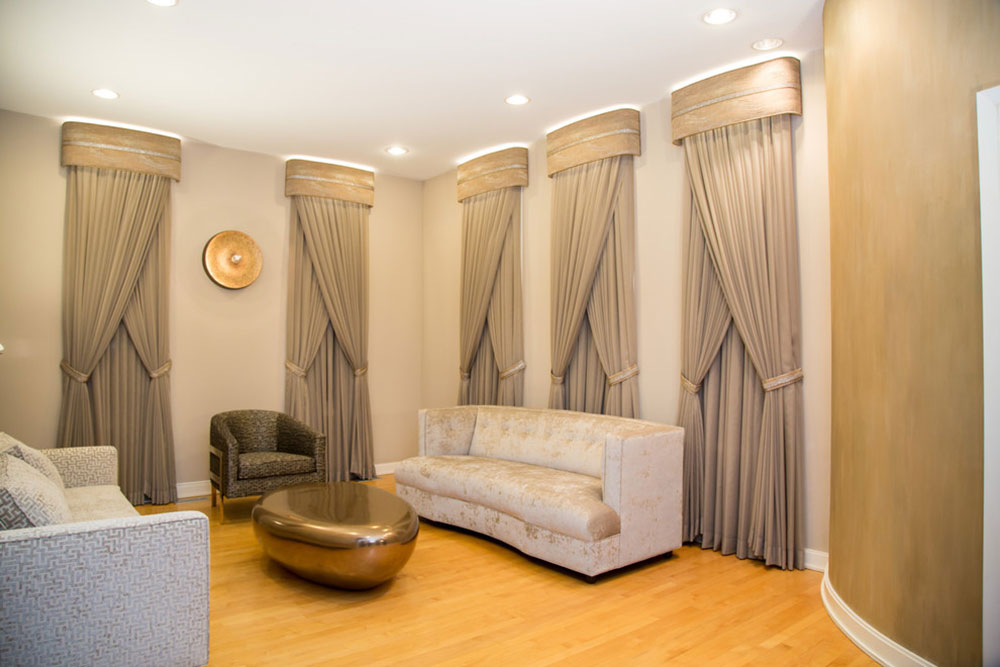 Image source: Gailani Designs Inc.
Image source: Gailani Designs Inc.
Through the exclusive use of curves, we can create elegant shapes and patterns. In this case, simply carving a rectangular piece of wood with the use of a round cardboard template we can create very curious internal patterns.
An example is if we make a cut that goes from the lower right end of the cornice, going up to the upper central part and down again to the lower left corner, the final result is a kind of a bridge.
If we now do the same process, but in an inverted way (upper corner, lower center, upper corner), we will have created a kind of eye with rounded triangles at the edges.
Notches and openings with triangles
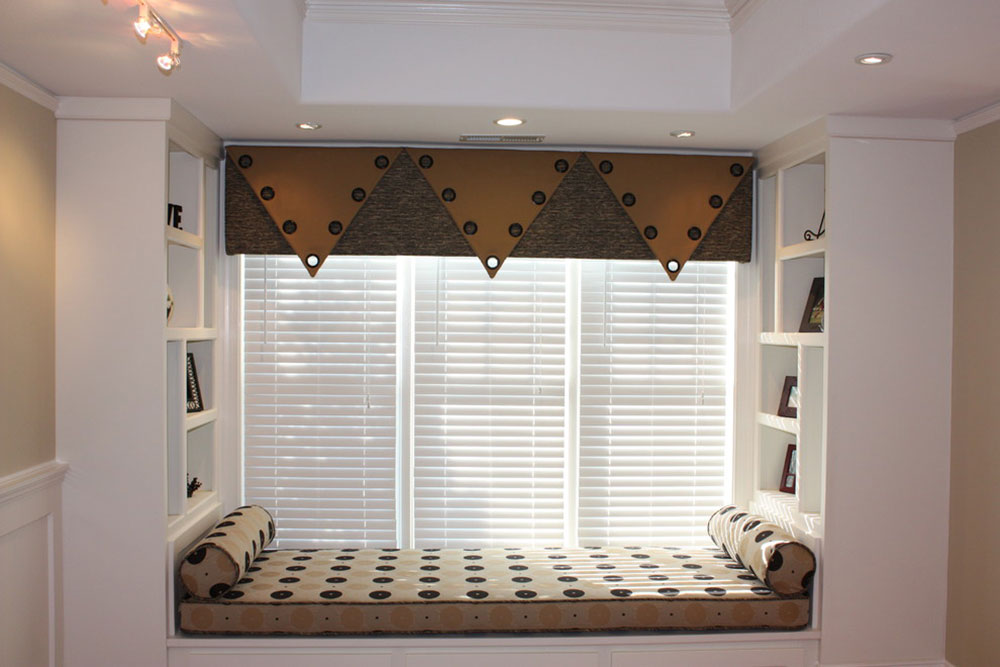 Image source: Hanging In Style Designs
Image source: Hanging In Style Designs
Have you heard of the sawtooth pattern? It is simply a zigzag line that resembles the cutting part of a saw. It is a pattern made up of triangles that go up and down.
In cornices, it is very common to see it. To do this, we will simply have to cut out a triangle template that measures a little less than ¼ of the total height of the cornice board.
With our template made, we will proceed to mark it throughout the lower part. Another option if you do not want the sawtooth design is to lower the template a little more so that it exceeds the wood a couple of inches. If we draw the template in this way, the final result will be a kind of notch.
You can try different patterns that resemble classic furniture designs. Combine the use of triangles with curves for more striking results.
A step pyramid for the most symmetrical
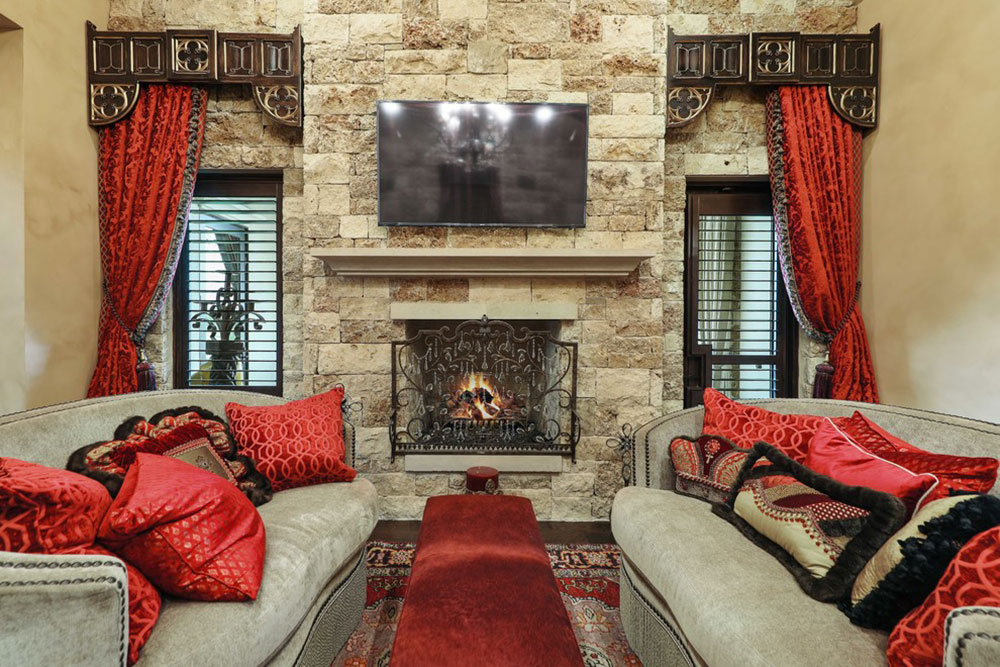 Image source: OSCAR E. FLORES DESIGN STUDIO, LLC
Image source: OSCAR E. FLORES DESIGN STUDIO, LLC
The stepped pyramid design will test our pulse. We will start by drawing a horizontal line from either end of the cornice.It will not be very large, one or two inches maximum.
Later we will make a similar cut, but in a vertical direction, starting from where we finish the horizontal line. In the end, we go back to carving horizontally, and repeat the process as many times as we want.
The difficulty of this style is that, in general, it is done symmetrically. That is, everything we do in one half, we must repeat it in the other.
The selection depends on us, but we already know what they are called
It does not matter if we are people of cornices or valances, we both seek to decorate the upper part of our window. Now that we know the differences between them, we can make better decision making in whether we look for a more free and loose style, or something more traditional and rigid.
If you enjoyed reading this article about valances and cornices, you should read these as well:
- Venetian Vibes – How Curtains and Blinds Change the Feeling of a Room
- Curtains Around Bed – Between Function And Design
- 8 Creative Ways To Design Your Small Home and Make It Look Bigger

